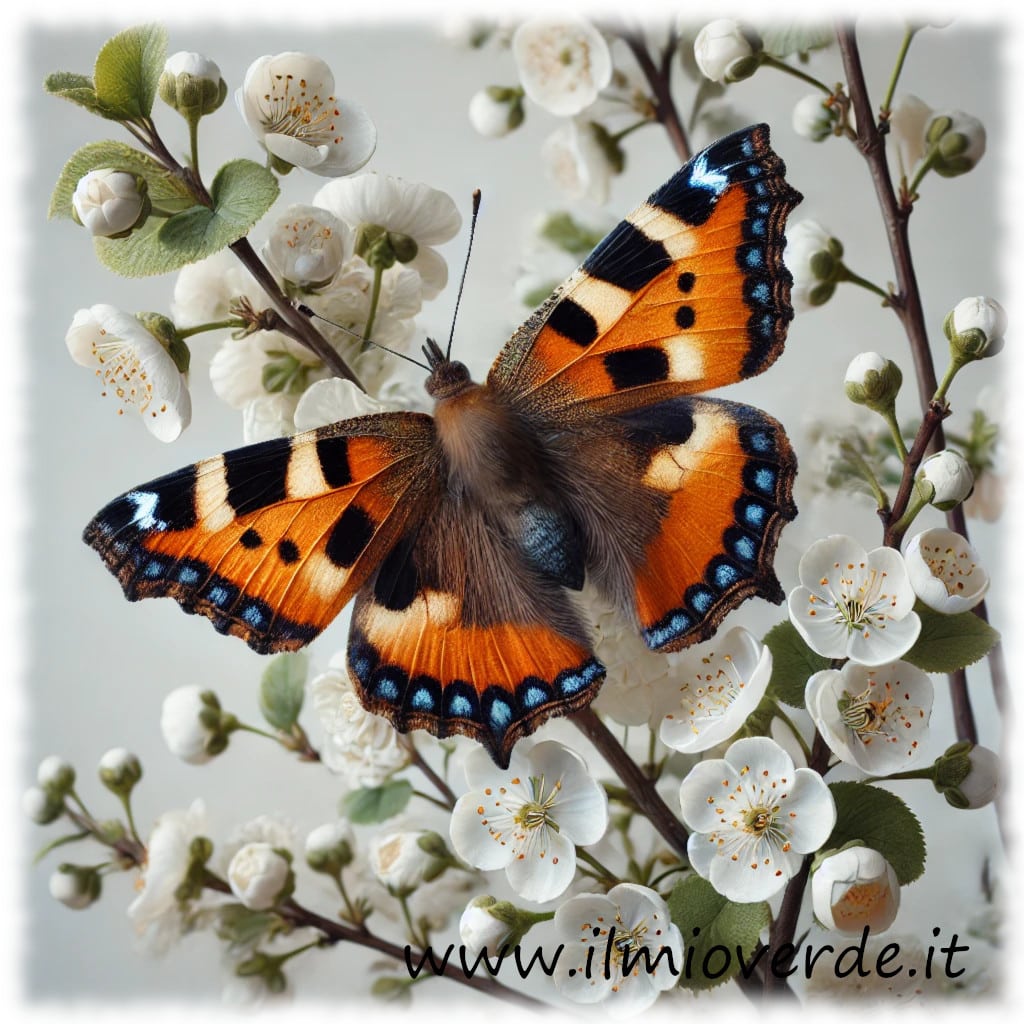Nymphalis polychloros
The Nymphalis polychloros is a butterfly belonging to the Nymphalidae family. Found in Europe, North Africa, and temperate Asia, this species is appreciated for its vivid coloration and unique behaviour.
Description
This butterfly has a wingspan ranging from 68 to 75 mm. The upper wings are orange-red with black markings, while the margin is dark brown with a series of bluish lunules. The underside of the wings is brown-grey, which helps camouflage the insect when it rests on woody surfaces.
Habitat and Distribution
The Nymphalis polychloros is found in woodland clearings, shrubby areas, and orchards, preferring environments with deciduous trees. It can be found from sea level up to about 1900 meters in altitude. It is widespread across Italy, including the islands, and in many European countries, although in some areas it has become less common due to habitat loss.
Life Cycle
This species typically has one generation per year, although in warmer areas, two generations can occur. Adults hibernate in sheltered locations, such as crevices in tree bark or abandoned buildings, emerging in spring for mating and egg-laying. The larvae develop in groups on the branches and leaves of host plants.
Host Plants
The larvae of Nymphalis polychloros feed on the leaves of trees such as elm (Ulmus), willow (Salix), pear (Pyrus), apple (Malus), hawthorn (Crataegus), poplar (Populus), and various species of Prunus. This broad range of host plants helps it survive in diverse environments.
Conservation
Although Nymphalis polychloros is still relatively common in some areas, it has become rare in others due to the decline of host plants and habitat loss. The conservation of forests and natural orchards is essential to ensure the survival of this beautiful butterfly.
Fun Facts
- It is often confused with Nymphalis antiopa (the Camberwell beauty), but can be distinguished by the lack of a yellow band on the edges of its wings.
- It is a very resilient butterfly, capable of surviving harsh winters due to its ability to hibernate in protected nooks.
- On sunny days, adults can be observed feeding on tree sap or fermented fruit.
Nymphalis polychloros is a fascinating example of adaptability and beauty, showcasing the richness of our natural heritage.
Immagine generata da IA
